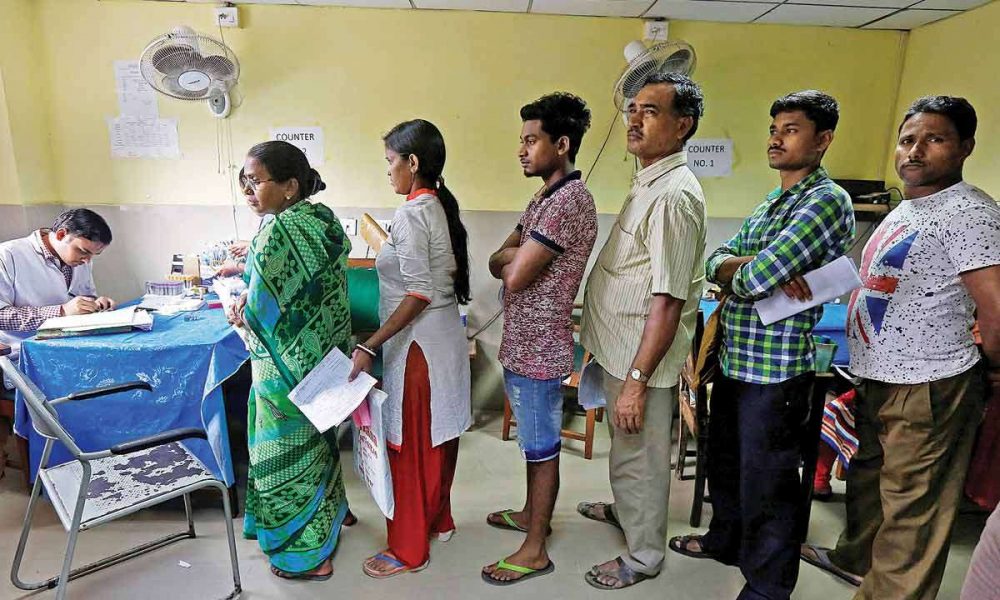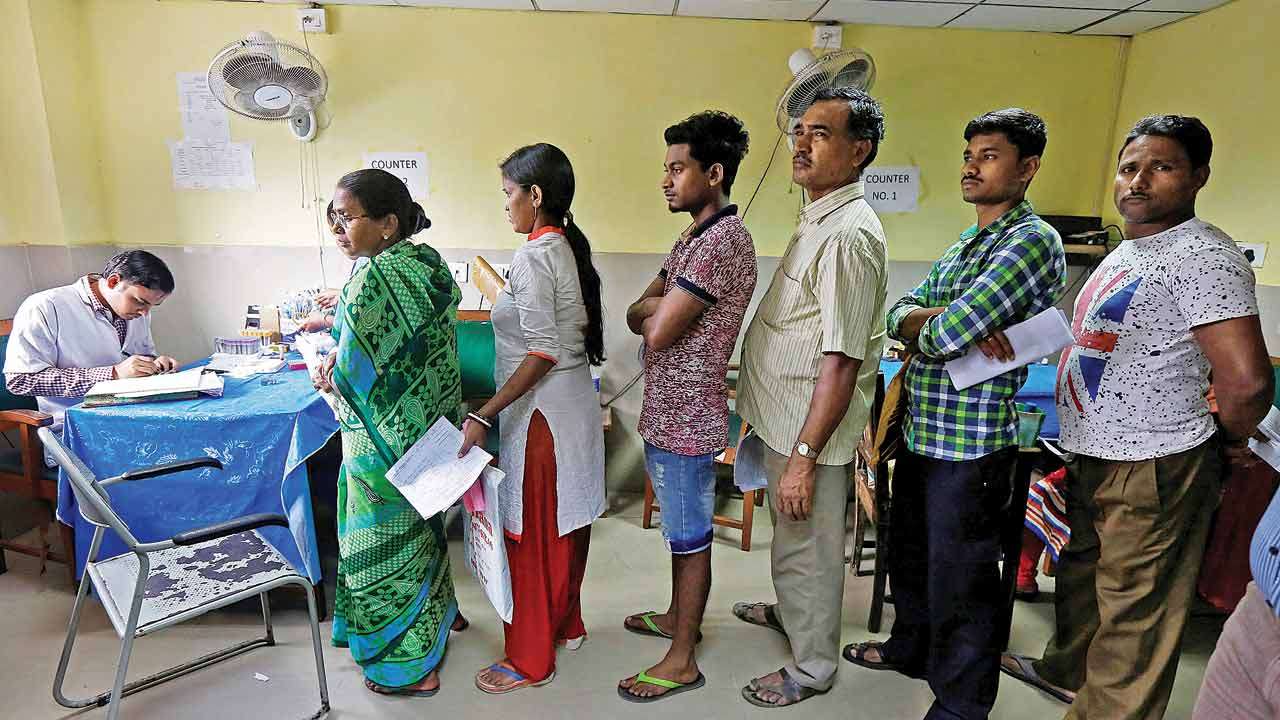
Indian health system progressing, yet needs strengthening; 2019 Healthcare recap
 We are about to bid adieu to 2019 and welcome a new year. While we are on the verge of ending this year, let’s go through some ups and downs of the Indian healthcare sector in 2019.
We are about to bid adieu to 2019 and welcome a new year. While we are on the verge of ending this year, let’s go through some ups and downs of the Indian healthcare sector in 2019.
1. National Medical Commission Bill- From the scratch itself National Medical Commission Bill has been creating debate among the medical fraternity. After so many discussions and controversies, the National Medical Commission Bill was passed in the monsoon session of parliament. National Medical Commission, the regulatory body to be formed, will subsume the Medical Council of India and its regulatory and corruption issues. The law also regulates medical institutions and it determines the fees for up to 50% of the seats in private medical institutions.
2. Progress in Malaria Eradication – India accounts for 70% of the malaria cases globally. But in 2018, India registered 2.6 million fewer malaria cases than in 2017. According to the reports, India’s strategy included indoor insecticide spraying, reduction of mosquito-breeding spots, and free distribution of long-lasting insecticidal nets. Treating asymptomatic or afebrile malaria played an important role in reducing malaria infections. Currently accounting for 3% of global malaria cases, India aims to eliminate the disease by 2030.
3. Litchis, malnutrition, or heat and humidity – 162 children died in Bihar, till July 2, 2019, in one of the worst outbreaks of acute encephalitis syndrome (AES) in the state since 2014. Several agents are causing AES such as bacteria, fungi and viruses. The most common causes are Japanese encephalitis, Scrub typhus, dengue, measles and even Zika virus. The cause of the outbreak this time was linked to consumption of litchi, Minister of State for Health and Family Welfare Ashwini Choubey told the Rajya Sabha on July 2, 2019. When malnourished children eat litchis (readily available in local orchards), it triggers hypoglycaemia and leads to seizures or AES, Choubey said. This was based on a 2014 study conducted by virologist T Jacob John and a 2017 study by the Centers for Disease Control and Prevention, USA. Not all experts agreed that litchis were the only factor. High daytime temperatures (38-40 degrees Celsius) and high humidity (50-60%) at night during the June to August period cause heat-stroke in children, some doctors surmised.
However, in both theories, undernutrition and poverty play important roles: When a child sleeps hungry, her blood sugar levels dip and the body does not have enough reserves in the liver, leading to hypoglycemia. Lack of health infrastructure and ground-level staff and a delay in bringing the children to the hospital also increased the death toll.
4. Ayushman Bharat completes a year – The largest healthcare scheme Ayushman Bharat-Pradhan Mantri Jan Arogya Yojana (AB-PMJAY) has completed one year of operation. According to the data from its website, it has covered more than 6.9 million hospitalisations and issued more than 69.4 million e-cards, by 20th December 2019. But it is yet to reach its target of ensuring 100 million Indian families, a sum of Rs 5 lakhs. The one challenge the scheme is facing delays in the payment to the health provider. Regular engagement with data, including evaluation studies and a willingness to recognise that there are issues initially–from inequity to fraud–as also an attempt to think through how to resolve them, is a welcome change, said Avani Kapur, director of Accountability Initiative, Centre for Policy Research. “Portability, I think, was an excellent move to ensure ease of access,” she said. Meanwhile, the beneficiary database is “very old” and the government has to “clean it up and exactly identify the people still left out and how to make them part of the scheme”, Indu Bhushan, chief executive officer of AB-PMJAY, told IndiaSpend in December 2019.
Already, over half of hospitalisations in India (51.9% in rural and 61.4% in urban) are in private hospitals, showed the latest National Statistical Office report on consumption in health, as we reported in December 2019. The average medical expenditure per hospitalisation in a private hospital (Rs 31,845) is seven times that in a government hospital (Rs 4,452), the report said.
However, less than 10% of the poorest have any kind of health insurance, forcing them to spend out of pocket for healthcare expenses, our analysis showed.
5. A decrease in maternal mortality, infant mortality – According to the reports by India spend, India’s infant mortality rate – deaths per 1,000 live births fell from 42 in 2012 to 33 in 2017. Also, fewer mothers died during childbirth as India’s maternal mortality ratio (MMR)–maternal deaths per 100,000 live births–fell 27% from 167 in 2011-13 to 122 in 2015-17, according to the Sample Registration System bulletin. India is still a long way from the Sustainable Development Goal for MMR: a target of 70 deaths per 100,000 live births by 2030. Three Indian states have already achieved this–Maharashtra, Tamil Nadu and Kerala. Though the Infant mortality rate was higher than the global average (29) and India’s neighbours Nepal (28), Bangladesh (27), Bhutan (26), Sri Lanka (8) and China (8), it is better than that of Pakistan (61) and Myanmar (30).
6. Malnutrition in children, adolescents- According to the data from Comprehensive National Nutrition Survey (CNNS), the first of its kind that gave the nutritional status of children aged 5-14 years, one in three (35%) children younger than five years were stunted (low height for age) and underweight, one in six (17%) were wasted (low weight for height), and two in five (41%) were anaemic. The prevalence of stunting, wasting and underweight in children has declined compared to the figures of National Family Health Survey, 2015-16: There has been a 3.8-percentage-point decline in stunting, 4-percentage-point decline in wasting, and 2.5-percentage-point decrease in underweight children from 2015 to 2018, the CNNS found.
India ranked 104 out of 117 countries on the 2019 Global Hunger Index–that is based on child wasting, stunting, undernourishment and child mortality–performing worse than Pakistan (94), Bangladesh (88) and Sri Lanka (66).
However, there is another challenge–of overnutrition and non-communicable diseases: 5% of children and adolescents (5-19 years) were overweight, one in 10 children (5-9 years) were pre-diabetic, and 1% of children in that age group were already diabetic, the CNNS found, as IndiaSpend reported in October 2019.
India launched POSHAN Abhiyaan, the national nutrition mission, in March 2018 to improve nutrition among children, pregnant women and lactating mothers. It aimed at achieving convergence between different departments such as women and child development with health and public distribution system.
POSHAN Abhiyaan’s focus on behaviour change, on recognising social determinants such as age at marriage, childbearing and sanitation, and on improving key drivers such as complementary feeding are welcome, said Purnima Menon, senior research fellow, International Food Policy Research Institute.
7. Deadly Air pollution – One in eight deaths in India was due to air pollution, a December 2018 study co-authored by researchers at the Indian Council of Medical Research showed. In 2017, 1.24 million had died due to air pollution, and Indians could live 1.7 years longer if they breathed clean air, as IndiaSpend reported in December 2018.
“We have brought together and analysed tens of thousands of studies showing the effect of air pollution on health from every population of the world,” the World Health Organization’s (WHO) climate lead Diarmid Campbell-Lendrum told The Times of India on December 9, 2019. “We are yet to find a study which shows any population, including India, which is immune from the health impacts of air pollution,” he said.
All year-round, the level of air pollution in Delhi remains three times higher than the national standard. Unless we bring down the annual concentration significantly, the health burden will not reduce, Sagnik Dey, associate professor at the Centre for Atmospheric Sciences at the Indian Institute of Technology, Delhi, told IndiaSpendin November 2019. To fight air pollution, governments need not only emergency measures when pollution spikes, but year-round air pollution reduction drives across sectors, he said.
Source: Health-check.in